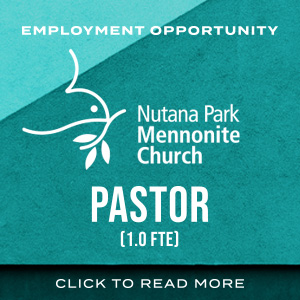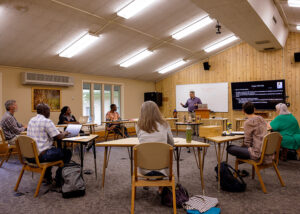“Where are you, Mennonites?”
A colleague and I are in a Winnipeg café discussing the current land struggles of many Indigenous peoples. I listen intently as she speaks of the Unist’ot’en, Muskrat Falls and the Tiny House Warriors. I nod my head in understanding and offer affirming murmurs. But then, halfway through tea, she looks at me impatiently.
“Where are you, Mennonites? You tell all these old martyr stories. And here we are—suffering and dying! Where are your martyrs now?”
I’m taken aback, not sure how to respond. I confess that the church often fails to join the poor and run the risks that they take. I share some of what we’re doing to address such, and where we need to go. She’s not buying it. Her eyes dismissively turn to a far window. A minute of silence goes by and then we head our separate ways.
As I bike to work, my mind relentlessly replays her lament, “Where are your martyrs now?” I’m tempted to defend and distance myself. Yet my heart feels the cry—for the Earth, the poor and even the church.
At my office, sitting in sweaty cycle gear, I stare at my work wall and pray. It’s plastered with pictures of martyrs and sayings of saints. My eyes hone in on one particular witness—a 42-year-old statement from the Asian Catholic Bishops: “As long as the ministers of the church are not prepared to be martyrs for justice, but are satisfied to live a life outside and above the life [of the oppressed], their impact will be mighty little.”
I take a deep breath and close my eyes.
Like many Mennonites, I hold close the 16th-century stories of Anabaptist suffering. Like many, I’m haunted all the more by the dangerous memory of the Cruciform One: “Take up the cross, and follow me.” Yet, am I willing, like Christ, to bear the weight of salvation?
Picking up my phone, I message Chris Huebner, a philosophy and theology prof at Canadian Mennonite University, who teaches classes on martyrdom. Not long after, we connect at a local bar and talk for two hours. As Chris shares, I learn that:
1. Exemplary witness, not death, is what matters. We can’t manufacture martyrs but we can choose to live costly lives.
2. There are martyrs among us. “If we believe,” says Chris, “the kinds of things that Christians traditionally believe about God and the church, that there will be martyrs is never a question. Who they are, and what they look like, is the hard part.” And yet, he continues, “If we believe what we say about Christ and the poor, then there’s no question that, in the Canadian context, the Indigenous story is full of martyrs.”
As I bike home that evening, my heart is grateful for rich conversation, and full with even more questions.
Lying in bed that night, I contemplate my friend’s impatient demand—“Where are you, Mennonites?”—and thank God for her troubling, holy question.
Steve Heinrichs is the director of Indigenous-Settler Relations for Mennonite Church Canada.
Read more From Our Leaders columns:
Freedom of speech for Christian media?
‘Where there is no vision…’
I smile because I’m grateful
Speak Jesus
Just say ‘hi’









Leave a Reply
You must be logged in to post a comment.